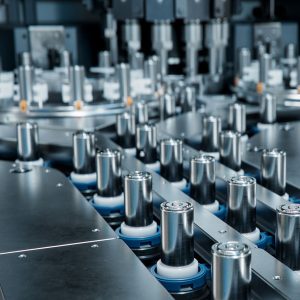
When Images Aren’t Enough – EDS and EELS
EDS and EELS can be coupled with SEM, STEM and TEM to determine the elemental composition, spatial distribution and segregation of elements.
Home » Exploring Alumina: Applications, Innovations, and the Crucial Role of GDMS
Alumina, or aluminum oxide (Al2O3), is a versatile material found in a wide range of industries ranging from home goods to high-tech engineering. Found in products such as decorative ceramics, cosmetics, kitchenware, LEDs, semiconductor devices, and biomedical implants, alumina is essential not only for its role in aluminum production but also for its durability, thermal stability, and electrical insulation, making it indispensable across these diverse fields.1
Alumina has been used in various forms for centuries, but its role as a critical industrial material began to be prominently recognized in the late 19th century. This recognition was bolstered particularly after the development of the Deville process in 1859, later replaced by the Bayer process in 1887, which efficiently separated alumina from bauxite ore, and the subsequent Hall-Héroult process in 1886, which revolutionized the production of aluminum from alumina, making aluminum much more accessible for industrial uses.


As we continue to push the boundaries of technology and demand more from our electronic devices, materials like alumina will play an increasingly crucial role. Its ability to enhance the performance and durability of advanced electronic devices not only showcases alumina’s beneficial qualities but also underscores the importance of materials science in solving complex engineering challenges. Looking forward, the integration of alumina in semiconductors can drive further innovations in energy efficiency and device reliability, making it a cornerstone material in the next generation of advanced electronics. Embracing advancements such as these will be key to achieving new levels of performance and sustainability across various industries, including automotive, aerospace, medical technologies, and implants.
Alumina purity testing is crucial, given the vast quantities produced worldwide, with each batch required to meet uniform specifications for high-stakes applications. Glow Discharge Mass Spectrometry (GDMS), one of EAG’s standout analytical testing services, provides significant advantages in this area, including minimal sample preparation and direct analysis capabilities. This method efficiently identifies impurities and analyzes elemental composition, eliminating the need for extensive pre-testing procedures. By utilizing GDMS,
manufacturers can consistently meet global quality standards, making it an important part of the alumina production process.
Whatever your testing needs, EAG offers a comprehensive suite of techniques tailored to industries such as aerospace, defense, and semiconductor manufacturing. EAG is your one-stop shop for thorough purity analysis of alumina and other critical materials. Contact us today to learn more about how we can assist in achieving and maintaining the highest standards of quality.

EDS and EELS can be coupled with SEM, STEM and TEM to determine the elemental composition, spatial distribution and segregation of elements.

Measuring the chemical state of the battery components such as the cathode, anode, separator, electrolyte, contact layers and additives, at various stages of cycling, provides vital information about the electrochemical processes that occur during battery use.

Cryo FIB uses a cold sample stage that can be controlled to -135°C making it it more suitable for temperature sensitive materials.

III-V materials partially provide us with the ever evolving and changing technological advances we enjoy today.
To enable certain features and improve your experience with us, this site stores cookies on your computer. Please click Continue to provide your authorization and permanently remove this message.
To find out more, please see our privacy policy.